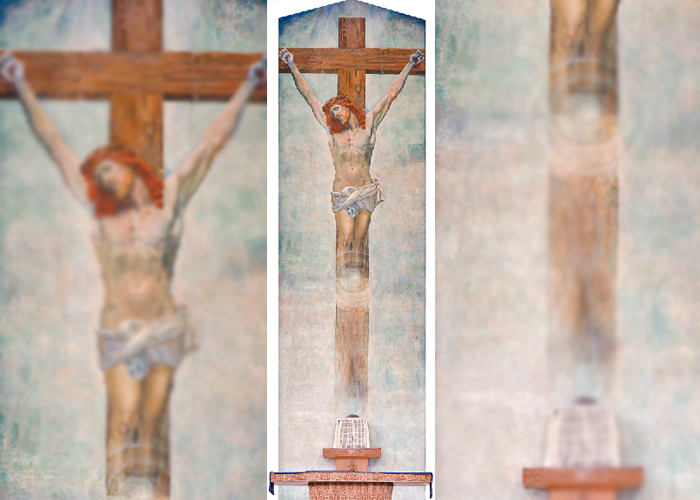
About the Piece
Hung in the middle of the FEU Chapel, above an elevated altar, is a long vertical panel of canvas rising to the rafters: a vision of the Crucified Christ, spectrally levitating, floating in the air, partaking of a quality of an apparition. It might seem that His corporeal body has been depicted midway of the final exhalation, or at the exact moment of giving up the ghost, when what we then retinally perceive is actually the afterimage of a body without density, weightless, and indeed a disembodied spirit. The artist draped a seemingly unfurled Veronica’s Veil not just over the visage but throughout the long and lean frame, which Francisco, mercifully, chose not to depict a la Grunewald’s Crucifixion, with its Christ twisted from pain, flayed and brutalized, bleeding from every pore.
Seen from a distance, the way Francisco had meant the image to be seen, the illusion is complete, having defied the definition of a painting as prescribed by the French artist and writer Maurice Denis: “Remember that a picture, before being a battle horse, a nude, or an anecdote, is essentially a flat surface covered with colors assembled in a certain order.”3 In viewing Francisco’s work, however, no one, to be sure, will be searching for colored pigments in whatever order, but rather will be mentally and emotionally conveyed into another region, which is precisely the sole purpose of art: to be an instrument of transport.
-
Date
1956
-
Medium
Oil on Canvas
-
Dimensions
420" x 108"
-
Location
Chapel